What is Penoplex: purpose + types of thermal insulation with a description of the application and characteristics
The insulated room compares favorably with the usual building in a comfortable microclimate, therefore, the insulation of houses and apartments has long been a prerequisite for putting the house into operation. Properly selected materials reduce the load on the supporting structures and reduce heat loss by up to 30%.
Penoplex construction products are an excellent example of a wide range of modern heaters. Let us consider more closely what Penoplex is, what types it is divided into and what characteristics it has. We also highlight the main advantages and significant disadvantages of this material.
The content of the article:
Pros and cons of Penoplex thermal insulation
For more than 20 years, the company, whose branches are located in various cities of Russia, has been manufacturing and selling insulation material with high thermal protection parameters. Due to the wide range and high quality of its products, Penoplex has taken a convenient niche in the Russian market and has successfully exported goods abroad.
Penoplex boards are made of a synthetic material - polystyrene by extrusion, that is, by mixing granular polystyrene with a blowing agent under conditions of high pressure and temperature. Additives are needed to give the slabs a uniform “air” structure of airtight cells.
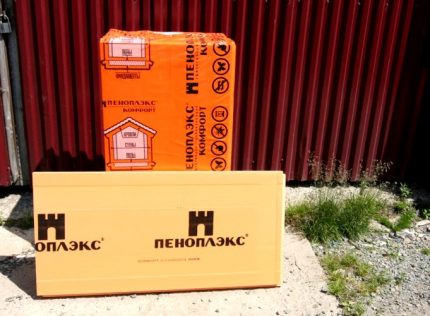
Thermal insulation benefits:
- minimum thermal conductivity;
- almost zero water absorption;
- resistance to the effects of the biological environment;
- bending and compression strength;
- wear resistance and durability:
- environmental friendliness - does not emit harmful substances.
Like all heaters, Penoplex allows you to minimize the costs of air conditioning and heating, and due to the low weight, the installation of plates is quick and easy.The material itself can withstand temperatures from -70 ° C to +70 ° C, and it can be laid at any time of the year.
Another plus is the variety of species - options are provided for finishing the roof, facade, walls, differing in thickness and degree of thermal conductivity.
The company's engineers also thought of complexes for thermal insulation of brick, frame, concrete, aerated concrete, wooden houses, and the manufacturer gives recommendations on the use of stoves or a sprayed composition from the outside or from the inside.
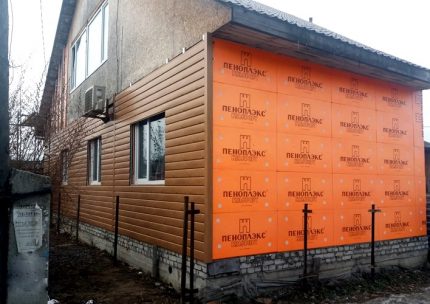
The main drawback of the material is the combustibility class - G4 or G3. Expanded polystyrene in this indicator is inferior to heaters with a natural base. For comparison: in mineral wool, NG (non-combustible) or G1 (low-combustible). More characteristics of extruded polystyrene foam we brought here.
Another disadvantage is the high cost of stoves and spray products. For example, a package of 10 mm Comfort plates (4 pcs.) Of standard 585 * 1185 costs an average of 1,650 rubles.
PENOPLEX products
For the convenience of customers choosing thermal insulation, the manufacturer divided all products into 2 large categories:
- for professionals;
- for home and apartment.
The goods from the first group are widely used for warming industrial, sports, agricultural buildings, laying pipelines and highways, in the construction of runways and railway canvases.
The second category is products for the population, with which you can independently insulate cottages, cottages, apartments. Let us consider in more detail the technical characteristics of XPS plates related to different types of Penoplex.
Category # 1 - Professional Thermal Insulation
In total there are 8 types of products in the category (if you combine Penoplex 45 and 45 C), which differ in size, characteristics, and some even in shape. Among them there is a universal thermal insulation, for example, “Osnova”, and a special one, designed for warming certain places, for example, “Sloping roof” or “Slope”.
View # 1 - PENOPLEX BASIS®
It is used if the requirements for loads are not imposed on the building structures. It is equally used for wall insulation (internal and external), sexesroofing.
The thickness of the Penoplex insulation is from 20 mm to 120 mm, the standard of the plates is 585 * 1185 mm.
Main characteristics:
A distinctive feature of this type of material is the compressive strength of 0.17 MPa.
An alternative to the “Basis” is the “Facade”, which is also characterized by special biostability, durability and reliability.
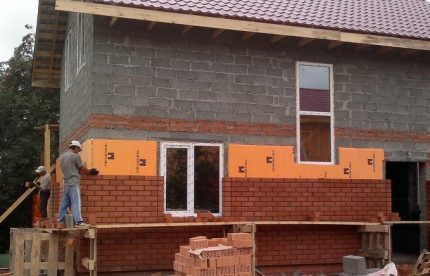
View # 2 - PENOPLEX® GEO
The main purpose is thermal insulation of buried structures - socles and foundations of industrial buildings, parking lots and stylobates, floors (including special), inverse roofs.
Plates 585 * 1185 mm have a thickness of 40 mm to 100 mm.
Main characteristics:
The compressive strength is higher than that of the "Fundamentals" - 0.3 MPa.
High density Penoplex slabs are involved in the arrangement wall drainagereduce groundwater pressure on the foundation. The insulation also protects the buried structures from freezing, preventing frost heaving.
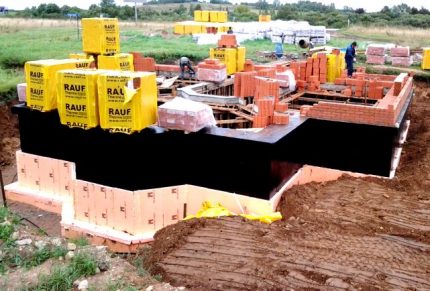
View # 3 - PENOPLEX® FACADE
According to the characteristics of the "Facade" is most close to the "Basis", so they are interchangeable. Thermal insulation is used for finishing external structures: the walls of the house outside, basement and first floors.
The thickness of standard plates (585 * 1185 mm) is from 20 mm to 150 mm.
Main characteristics:
The compressive strength is higher than that of the "Foundation" - 0.2 MPa.
Penoplex technical department specialists developed the FASAD PRO system, one of the components of which are the Facade slabs. The system effectively protects both walls and basement floors from moisture, cold, mechanical damage and deformation caused by temperature changes.

View # 4 - PENOPLEX® ROOF
The main purpose of the plates is roof insulation, but they are also used for thermal insulation of parking lots and stylobates.
The roofing insulation Penoplex does not differ in size standards - 585 * 1185, plate thickness - from 30 mm to 100 mm.
Main characteristics:
The combustibility category is slightly higher than that of Osnovy - G3, and the compressive strength is also higher - 0.25 MPa.
In the absence of special roof insulation, you can use products that are similar in characteristics: “Base”, “Geo” (for inversion types), “Slope”.

View # 5 - PENOPLEX® SLOPE
Thermal insulation is used as a forming material to create a slope on flat roofs. The direction can be longitudinal and transverse.
According to the angle of inclination, several types of plates are distinguished:
- A1, A2 - 1.7%
- B1, B2 - 3.4%
- B3 - 8.3%
Standard plate sizes - 585 * 1185 mm.
Main characteristics:
The combustibility category may be G3 or G4.
With the help of plates, the surface of which is located at different angles relative to the roof surface, a system is created that directs rain runoff to water inlets.

Advantages of “Slope” are reduced load on load-bearing structures, quick installation without involving a team.
View # 6 - PENOPLEX® 45 and PENOPLEX® 45C
Both types of thermal insulation are intended for the construction of pavement and are used wherever there are increased requirements for loads.
Dimensions - 600 * 2400 mm, thickness - from 40 mm to 150 mm.
Main characteristics of PENOPLEX® 45:
Main characteristics of PENOPLEX® 45C:
Plates are used for the reconstruction of city streets, the laying of roads, during railway construction.
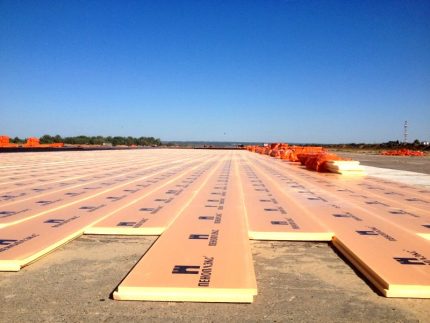
Thanks Penoplex 45 reduces the amount of work on the excavation, it becomes possible to use local heaving soils without replacing them with more inert materials.
Penoplex slabs are used in the construction of the tracks "Crimea" M-2, "Don" M-4, "Amur" and others.
View # 7 - PENOPLEX® BLOCK
The main purpose is road construction.
Dimensions:
- width - 600 mm
- length - 1200-3000 mm
- thickness - 120-1000 mm
Blocks are available to order, so other sizes are possible.
Main characteristics:
There are two types of “Block” products that differ in flammability class: without G4 flame retardant and with G3 flame retardant.
Blocks are made of several plates glued under a press. Finished products are durable and durable.
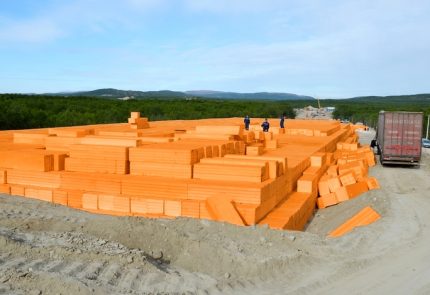
The use of blocks reduces the volume and time of work due to the lightness and standard sizes of products, due to which, in turn, calculations are quickly made. With the help of them build the so-called "light embankments."
View # 8 - PENOPLEX® SEGMENTS
Segments - elements of various configurations and sizes, which are used for insulation of pipelines. They differ in density - 35 and 45 kg / m³.
Main characteristics:
The length of the segments is 2400 mm, the thickness is 30-100 mm, the inner diameter is 60-1430 mm.
It is recommended to use segments with a density of 45 kg / m³ for laying pipelines in a non-channel way. All types of structures that take place outdoors require protection from UV radiation.
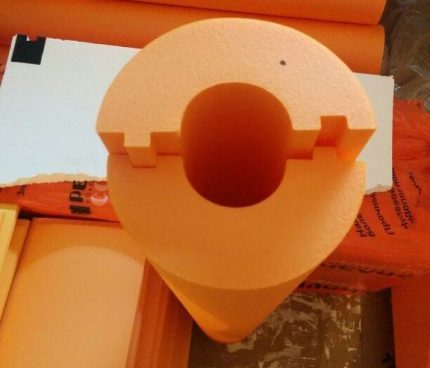
Category # 2 - heaters for home and apartment
All plates from the "amateur" segment have the same dimensions - 585 * 1185 mm, except for roofing elements, the length of which can be standard - 1185 mm, and extended - 2370 mm. They are not inferior in properties to products from the "professional" category.
Scope of use is wide:
The advantage of the plates is that they are convenient to use in private housing construction - the manufacturer offers ready-made installation instructions and even a description of thermal insulation systems using Penoplex products.
Main characteristics:
| Comfort | Foundation | Pitched roof | Wall | |
| Compressive strength, MPa | 0,15 | 0,3 | 0,25 | 0,15 |
| Water absorption 24 h,% | 0,4 | 0,4 | 0,4 | 0,5 |
| Fire resistance group | G4 | G4 | G4 | G4 |
| Density, kg / m³ | from 20 | 27-35 | 26-34 | from 20 |
| Thermal conductivity, W / (m × ° K) | 0,032 | 0,032 | 0,032 | 0,032 |
The difference in technical parameters relates mainly to strength and density, the remaining characteristics of Penoplex thermal insulation are approximately the same.
The most popular type is Comfort, used not only in suburban construction of private houses, but also for insulation of city apartments.
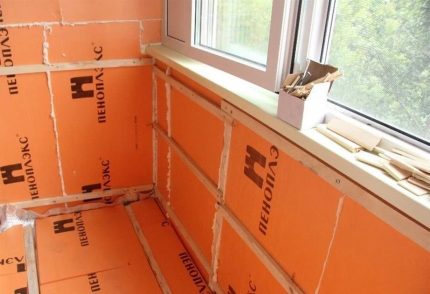
Also Penoplex slabs from the Comfort series are used for arranging basements, basement floors, attics, workshops. But do not forget about the low category of flammability, which is why it is recommended to use thermal insulation complete with fibrous non-combustible materials.
We have a detailed self-instruction on our website attic insulation from the inside.
Category # 3 - Related Materials in Cylinders
Along with slabs and blocks, Penoplex also produces aerosol cans.

Products have various purposes:
- FASTFIX® winter foam - for the “warm floor” system, installation of windows and doors, sealing joints and cracks in balconies, sealing holes for pipes;
- FASTFIX® polyurethane foam - for construction work, installation of window and door blocks, filling gaps and voids;
- FASTFIX® household foam - a universal tool for all types of construction work;
- FASTFIX® adhesive - for mounting polystyrene plates on walls, roofs, floors;
- FASTFIX® cleaner - for removal of not yet hardened means - glue or foam;
- FASTFIX® sprayable insulation - for thermal insulation of surfaces with a complex configuration.
For the use of cylinders, pistols or special thin tubes are used to accurately apply the composition to the surface. Chemicals are aggressive, so when working with spray cans, use protective clothing and a mask.
The cost of building materials in cans is not so high (190-350 rubles), therefore, when using Penoplex products, we recommend using glue and foam from the same manufacturer.
Conclusions and useful video on the topic
About the manufacture and purpose of Penoplex:
Practical application - insulation of the loggia:
Thermal insulation of reinforced concrete foundation covered with bituminous waterproofing:
Step-by-step video instruction on pitched roof insulation:
Due to its resistance to biological damage, strength and low thermal conductivity, Penoplex has become one of the most popular options for warming buildings and individual structures.
If desired, the plates can be mounted independently, without the involvement of specialists. However, before work we recommend choosing the most suitable type, studying the instructions and making calculations so as not to overpay and use the quality of the products to the maximum.
You choose the right type of Penoplex for thermal insulation at home and want to consult with our experts and other visitors to the site? Ask questions in the block under the article, describing in detail the areas that you want to insulate.
If you have already been insulated by Penoplex and want to tell about your impressions and the effectiveness of this material, please leave your comments below.

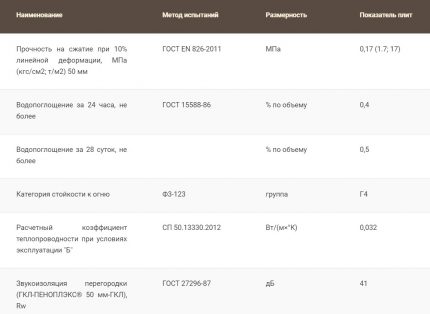
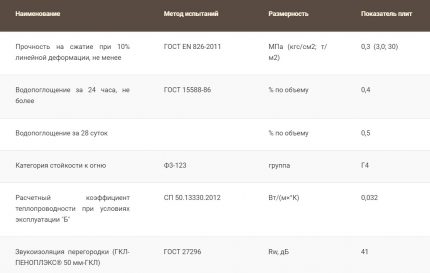
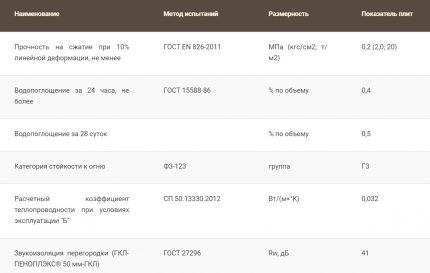
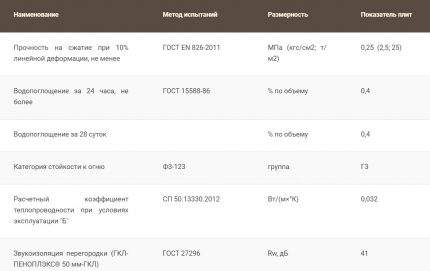
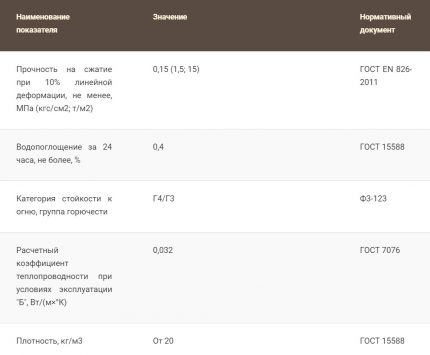

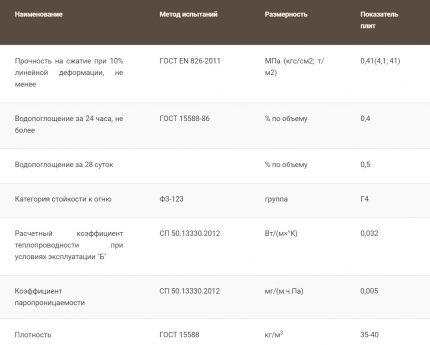
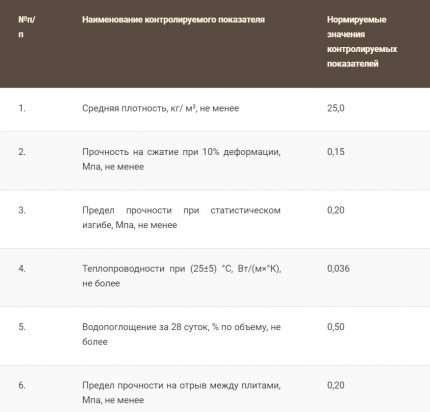

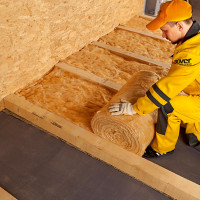 Insulation for the floor in a wooden house: materials for thermal insulation + advice on choosing insulation
Insulation for the floor in a wooden house: materials for thermal insulation + advice on choosing insulation 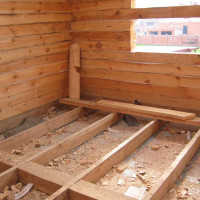 Floor insulation by logs: materials for thermal insulation + insulation schemes
Floor insulation by logs: materials for thermal insulation + insulation schemes 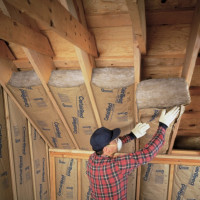 Attic roof insulation: a detailed instruction on the installation of thermal insulation in the attic of a low-rise building
Attic roof insulation: a detailed instruction on the installation of thermal insulation in the attic of a low-rise building 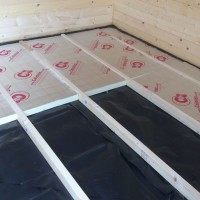 Garage floor insulation: varieties of insulation for the floor + step-by-step instructions
Garage floor insulation: varieties of insulation for the floor + step-by-step instructions  Izospan A, B, C, D: insulation specifications and rules of use
Izospan A, B, C, D: insulation specifications and rules of use 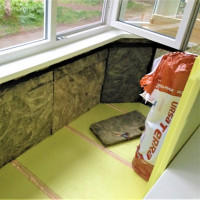 Do-it-yourself warming the balcony: popular options and technologies for warming the balcony from the inside
Do-it-yourself warming the balcony: popular options and technologies for warming the balcony from the inside  How much does it cost to connect gas to a private house: the price of organizing gas supply
How much does it cost to connect gas to a private house: the price of organizing gas supply  The best washing machines with dryer: model rating and customer tips
The best washing machines with dryer: model rating and customer tips  What is the color temperature of light and the nuances of choosing the temperature of the lamps to suit your needs
What is the color temperature of light and the nuances of choosing the temperature of the lamps to suit your needs  Replacement of a geyser in an apartment: replacement paperwork + basic norms and requirements
Replacement of a geyser in an apartment: replacement paperwork + basic norms and requirements
Oh, Penoplex is a cool thing! Almost universal. Very high-quality plates: they do not crumble, they are durable, they insulate well. It’s great that such materials exist now. Some 30 years ago I had to suffer from polystyrene foam. These tens, hundreds of electrifying balls into which it breaks up, I will never forget. I have a balcony insulated with Penoplex (floor and sides). Only I noticed that many people think that Penoplex is a material, and this is the name of the manufacturer. The material is called polystyrene foam. And my wife asked herself one plate for needlework. He says it’s very convenient to lay out and knit with pins. Also appreciated that the material does not crumble.
Expanded polystyrene material is modern and popular, but it is not as perfect as you describe. The material is very flammable; when burned, it emits a bunch of toxic substances that are worth breathing in and you will immediately lose consciousness.If there is a fire, getting out of the house trimmed with polystyrene foam will be oh how difficult. The second significant drawback - Penoplex is very popular with mice and insects who like to bite holes and minks in it. And finally, one more minus - it itself emits harmful substances, which gradually accumulate in the room and affect residents. It is suitable for exterior decoration, but inside I would definitely not.